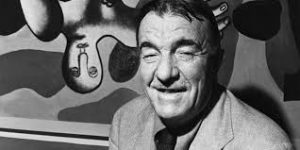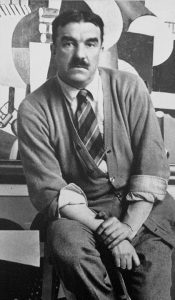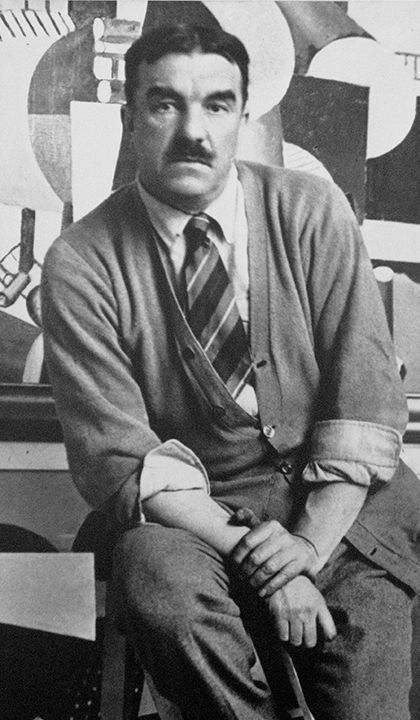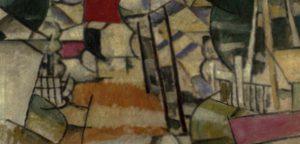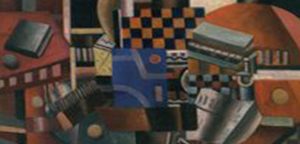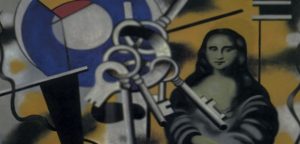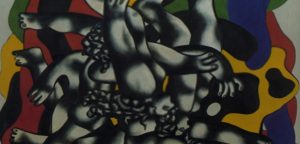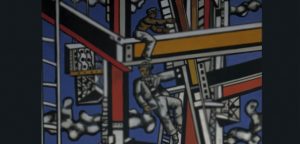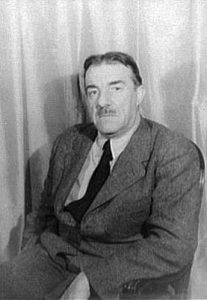Joseph Fernand Henri Léger was born on the 4th of February in 1881 in the village of Argentan, France.
1881 - 1955
Joseph Fernand Henri Léger
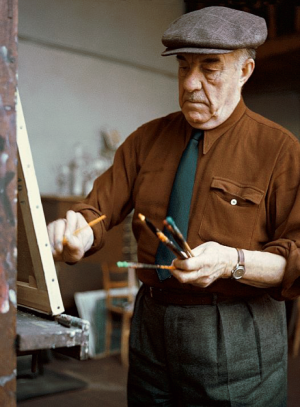
description
A French painter, sculptor, master of the monumental decorative art, one of the grandees of the fine art of the early twentieth century.
The father of the future artist was engaged in cattle breeding and died when Fernan was only a few years old. Leger received his primary education at the church school in Tensecheb, and afterward, he studied architecture in Cannes.
Fernand Leger played an important role in the formation and dissemination of Cubism and laid the foundations for such avant-garde trends as Neoplasticism and Constructivism. The artist actively collaborated with Cubist group “Golden Section”, participated in the exhibitions “Salon of Independent”, “Autumn Salon” and avant-garde association “Style”, founded by Piet Mondrian in the Netherlands and the Russian “Jack of Diamonds”. His interest in the possibility of synthesis of the arts led to the development and implementation of several architectural and design projects. The artist also clearly manifested himself in the field of applied creativity, scenography, cinema and book graphics. Together with Ozenfant, he founded The Free Art School, and later The Contemporary Art Academy. From 1940, the artist lived in the United States, where he taught at Yale University and at Mills College in California and achieved much in promoting contemporary art trends in the country.
Key Ideas:
– First of all, Fernand Leger is known as one of the four great figures of Cubism, along with Picasso, Braque and Gris. Being an architect by education, the artist became early interested in the value of the figure and the plane in a picturesque painting. Following the teachings of Cezanne, he worked in a geometric style, paying special attention to the form of objects in his works and supplementing complex multidimensional compositions with dynamic, rich colors.
– The art of Leger has its own bright individual features and specialties. Unlike his fellow Cubists, he avoided using separate, unrelated fragments, and did not support the idea of analytical Cubism, where objects lose their outlines, smoothly flowing into each other.
– He worked only with distinct and clear forms, sometimes outlining them with a thick dark line, and sometimes dividing them with the help of color and tonal contrasts. The peculiarity of the author’s work is the use of original tubular forms, for which his art is even called a special term – “tubizm”. This is seen most clearly in the paintings “Naked in the Forest” (1910) and “The Village in the Forest” (1914).
– After 1918, a special interest in mechanical details emerges in the artist’s work, elements of various machines and modern designs appear in his paintings. Industrialized cities and the latest technological developments extensively impressed the artist, who genuinely admired the scientific progress and at the same time was afraid of it as a source of powerful strength and energy.
– Along with various mechanisms, people appear in Leger’s works. At first, they act only as a complement to the machine world, but later they begin to play more important roles, turning into the main object of the image in the artist’s work. Human figures gradually lose their resemblance to robots, gaining monumental forms and clearly decorative execution.
– F. Leger considered the accessibility of his paintings for the broad masses the main task of his work. Proceeding from this goal, he created many socially oriented works in the late period of his work.
– Depicting the modern reality, everyday life of the working people and their holidays, Leger tried to express the beauty of the human soul and its striving for perfection in accessible and simple ways. Among such works, there are “Entertainment” (1943), “Tourist” (1954), “Builders” (1950) and a number of other canvases, as well as wall paintings, mosaics and stained glasses created by the artist in several churches and public buildings.
1881
1900
1904
1908
1914
1920
1930
1940
1950
1955
The birth of the artist
Moved to Paris
Moved to Paris, where he earned his living executing architectural drawings. After the compulsory military service, not having passed the selection to the Higher School of Fine Arts, he entered the private art academy of Julian. He got acquainted with the achievements of contemporary fine arts; the influence of Impressionism could be traced in his works.
There was a big breakthrough in the creative development of the artist
There was a big breakthrough in the creative development of the artist. He visited the exhibition of works by Cezanne, who made a strong impression on him, and began to work in a direction that was completely new for him. During his stay in Corsica in 1906, the artist created a series of Cubist landscapes.
Visited the colony of artists "Hive"
Visited the colony of artists “Hive”, where he met many representatives of contemporary art. Among his friends were the most advanced artists, sculptors and poets: R. Delone, A. Arkhipenko, M. Shagal, A. Lawrence, J. Lipschitz, G. Apollinaire. In 1910, Lezhe participated in the exhibition “Salon of Independent” for the first time and got acquainted with the works of Picasso and Braque.
He was called up for service in the armed forces
He was called up for service in the armed forces, where he received minor injuries and poisoning with gases and was forced to spend a long time in Verdun. The First World War greatly affected the work of Leger, which acquired a touch of tragedy and despair in this period. After the war, the period of “mechanization” in the artist’s work started, when Leger depicted moving mechanisms and machines in his paintings.
Leger traveled a lot in Europe
Constantly participated in the Salon of Independent and Autumn Salon, created illustrations for several books. In addition to painting, he worked in cinematography, created scenography for several modern plays. Leger traveled a lot in Europe, visited Italy, Germany, Scandinavian countries, where he participated in various exhibitions. In 1924, he made film “Mechanical Ballet” in collaboration with M. Ray and D. Murphy and opened the Free Art School together with Ozenfant.
Made a trip to the United States of America
Made a trip to the United States of America, where the exhibition was held in the New York Gallery of Valentine. During this period, Leger began his teaching career at the Modern Art Academy.
During the Second World War, he lived in the United States
During the Second World War, he lived in the United States, where he taught at Yale University and at the Californian College of Mills. Here the artist continued his creative experiments, discovering a new world of sport, circus, variety, city entertainment. The art of Leger continued to evolve and change – you can see human figures spinning in emptiness, as if in a state of weightlessness.
After the war, he returned to Paris
After the war, he returned to Paris. The artist joined the Communist Party, his paintings acquired a social sound, his artistic methods were simplified, they became more decorative and monumental. Leger took part in several major design projects. Participated in the 26th Biennale in Venice, in many exhibitions in Germany, Italy, Eastern Europe.
The death
He died on the 18th of August in 1955 in Gif-sur-Ivet, France.
Joseph Fernand Henri Léger
On Artist
flow
Impressionism
Post-Impressionism
Fauvism
friends
Robert Delone
Alexander Arhipenko
Henri Laurent
Jacques Lipschitz
Chaim Soutine
Mark Shagal
Max Jacob
Alexander Calder
artists
Paul Cezanne
Henri Matisse
Georges Braque
Pablo Picasso
Henri Rousseau
Jean-Leon Jerome
By Artist
flow
Neoplasticism
Abstract Art
Muralism
Tubism
Pop Art
Constructivism
friends
Andre Mare
Pete Mondrian
Albert Gleze
Theo van Doesburg
Ozanfan Amed
Marie Loransen
Alexandra Exter
Nadia Leger
Le Corbusier
Roman Yulianovich Selsky
Alice Bailly
artists
Nadir Afonso
Asger Jorn
Tarsila do Amaral
Louise Bourgeois
Margarita Selskaya-Reich
Roy Lichtenstein
James Rosenquist
Elsworth Kelly
Frank Stella
Constantin Brancusi
Jules Olitski
Abdul Mati Klarwein

